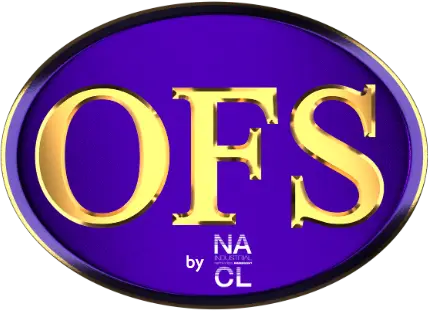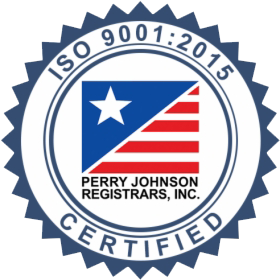In the complex world of optical technologies, collaboration and deep expertise are crucial for success. North American Coating Laboratories (NACL) and Optical Filter Source (OFS), now operating under the same umbrella, recently showcased this synergy in a project developing advanced vision system components.
Their combined capabilities resulted in optimized solutions, faster development times, and significant cost savings for their client. This article details how their unexpected collaboration delivered exceptional results.
When Paths Converge: An Unexpected Collaboration
What makes this project particularly remarkable isn’t just the technical challenges overcome, but the unexpected discovery that two separately contracted companies were actually working on different components of the same system, only realizing this fact after NACL acquired OFS.
“About a year ago, North American Coating Laboratories acquired Frank’s company, Optical Filter Source, and this project was already being worked on by each of us individually, with no knowing that the other was involved,” explains Brian Wilson, President and CEO of NACL. “We started talking about some different projects that we’re working on, and discovered, ‘well, we’re working on this, and you guys are working on that too.'”
This coincidence highlights both the specialized nature of optical coatings work and the interconnected ecosystem of the industry. Based in Cleveland, Ohio, NACL has built its reputation as a full-service optics coating company specializing in coatings for plastic, glass, and infrared materials. Meanwhile, OFS, led by Frank Calcagni and now operating as OFS by NACL, focuses on build-to-print optics, photolithography, and precision dicing services.
Complementary Expertise for Complex Challenges
The project involved developing specialized coatings for components of a vision system, with each company bringing distinct expertise to different aspects of the solution.
NACL was approached specifically for their expertise in coating plastics. “We were known in the industry as being experts in coating plastics and polymers,” says Wilson. “When this device required a polymer visor lens, they reached out to us.”
The component required a specialized beam splitter coating on one side and an anti-reflective coating on the other-all on a curved polymer surface that demanded excellent uniformity. Beyond creating the coatings themselves, NACL’s industry relationships proved invaluable in helping the client source the actual visor components.
“They had gone through three different molding companies to try to find somebody that can do a quality job in making the visor,” Wilson notes. “We led them to a new source that ultimately is the source that they’re using now to get these parts produced.”
Meanwhile, OFS was engaged through a different channel altogether, focusing on another critical component of the same system. “We were approached by an existing customer of ours, and that customer is the systems integrator,” explains Calcagni. “Our portion of the project involved making an eyepiece that goes directly in front of the individual wearing this device, requiring several different types of coatings and a variety of challenges.”
Technical Challenges: Where Science Meets Engineering
The development process was far from straightforward, involving numerous iterations and technical challenges that tested both companies’ capabilities.
For NACL, one significant challenge was balancing the optical requirements with the physical limitations of working with plastics. “Some of the characteristics they were looking for required a fairly sophisticated coating with many layers, which is oftentimes a challenge to get good adhesion and other performance characteristics on plastics,” Wilson explains. “We can’t use any heat when we’re coating plastics, and heat can help with adhesion and durability of the coating.”
Adding to the complexity, the specifications kept evolving. “Engineers come up with a design that in theory and on paper looks good, but in practice, even when it’s developed exactly the way that they expect it to, it doesn’t perform in the overall optical system exactly the way they expected it to,” says Wilson.
This required NACL to “continuously refine and adjust the beam splitter parameters, how much light is reflected, how much light is transmitted at what wavelengths” to achieve the crispest image.
For OFS, the project has evolved into an even more demanding second phase, building on their successful completion of the first stage.
“In the first phase, we were met with challenges to create coatings that are patterned and registered very well onto the surface,” Calcagni shares. “The systems integrator has to take the piece that we make and bond it to other devices, and therefore, all of that has to happen very accurately.”
The second phase has proven even more technically demanding: “It requires not only precision patterning but adds two more coatings and additional very precise locations, and then the customer has also requested better performance for the existing coating,” says Calcagni.
One particularly innovative challenge for OFS involved creating what Calcagni describes as a “covert coating”- “something that allows the instrumentation to see out, but the observer to not see in.” Additionally, they needed to pattern parts a coating process that requires temperatures “in excess of 500 degrees Fahrenheit and run times measured in days as opposed to hours.”
From R&D to Production: Measuring Success
For both companies, the ultimate measure of success is straightforward, continued business.
“The best measure of success is purchase orders and ongoing orders,” says Wilson. “When we start to see these R&D projects turn into production orders, usually small volumes at first for first article samples that go through the full testing, then that gets approved by our customer’s customer and so forth. And then there’s repeat business-that’s really a sign of success.”
Calcagni concurs with this assessment: “It’s somewhat subtle and understated, but the fact that both NACL and OFS are in the second phase of this project means that we must have done a good job in the first phase. We measure success by our ability to meet the customer’s requirements… As Brian said, the POs are the evidence.”
Building Knowledge for Future Applications
Every project contributes to both companies’ institutional knowledge, creating a valuable repository of expertise that can be applied to future challenges.
“Every time we do any of these R&D projects, it’s additional learning that we can put into the archive,” Wilson explains. “And then in the future, reach into that knowledge if there’s a similar application, or something that we can use what we’ve learned on this – at least as a starting point or to avoid some future mistakes.”
This knowledge-building approach is central to both companies’ operational philosophy. As Calcagni notes: “Our team is very adept. Our experience is both deep and wide. We have had to solve a lot of challenges over the years, and we try very, very hard to keep track of those and to not lose any of our data points along the way, and that’s how we’re able to leverage some things we’ve done in the past and readapt them for new applications.”
The Value of Early Involvement
One of the most valuable insights shared by Wilson is the importance of engaging coating specialists early in the development process rather than as an afterthought.
“We like to get involved as early as possible with the customers from their concept point and not towards the end,” Wilson emphasizes. “A lot of times, the coating requirements are kind of forgotten by the optical engineers designing the product until closer to the end. That can lead to many different problems.”
He notes that the combined expertise of the two companies now represents “72 years of optical coating expertise,” allowing them to often save clients “time, money and effort by just using our institutional knowledge that we’ve gained over all the years to help suggest a different path.”
As an example, Wilson points out how small specification adjustments can dramatically impact costs: “They might over-engineer something and say, ‘Hey, wait, this needs to have 100% of transmission.’ And they don’t understand that we might be able to do that, but can you get by with 99%? Because the difference in that 1% might be the difference between a coating that is 100 layers and a coating that is 25 layers, and so the cost is going to be 1/10 of the amount.”
Quality From the Start
For both companies, quality isn’t merely a checkpoint at the end of production – it’s built into every step of the process.
“Our engineers are not just involved sitting at a computer doing a design,” Calcagni explains. “They’re out there in the lab. They’re working with the process, they’re developing, and they’re modifying, and they’re checking to make sure that everything performs the way that it’s supposed to.”
This approach to quality permeates both organizations. “We check quality well before anything goes out the door,” says Calcagni. “A lot of times, we’re building quality into the parts in the design phase so that our outputs are a whole lot more straightforward. That way, we don’t find ourselves in the middle of a chamber run wondering what we’re doing.”
Synergistic Future
With NACL and OFS now operating as partner companies, they’re finding new opportunities to create value for their customers through their complementary capabilities.
“Now that the two companies are aligned and working together, when one of us may receive a request for a part of a project and the customer is talking about the project, we then prompt them for additional details,” Wilson explains. “‘Is there anything else that this project requires? Oh, this needs some patterning? Well, you should be talking to our team down in Texas.'”
This creates natural opportunities for cross-selling and comprehensive solutions: “We can actually kind of market for each other, sell for each other, and use our relationships to grow both businesses in new ways that we hadn’t really thought about before.”
A Foundation of Trust and Challenge
Both leaders emphasize that their success ultimately comes down to relationships built on trust and a genuine desire to solve problems.
“We love a challenge. We’re always here to help our customers. That’s our main goal, to solve their pain point,” Calcagni shares. “If we can achieve that, and then we can do a good quality job and deliver on time, then we retain customers, and we get referrals, and we do new business. That’s always been our goal, that’s going to continue to be our goal. It’s a winning model.”
This focus on building long-term partnerships that transcend individual projects is perhaps the most valuable asset that NACL and OFS bring to the table, a commitment summed up by Wilson’s observation that when they “work with our customers to better understand what’s involved with our side of the development process and the coatings and technology that we use, we together can then come up with a most viable solution for overall productivity and manufacturability.”
Contact NACL and OFS today to leverage their combined 72 years of optical coating expertise. Whether you’re developing advanced vision systems or facing complex optical challenges, their proven track record of innovation, cost-saving solutions, and technical problem-solving could transform your project outcomes.



